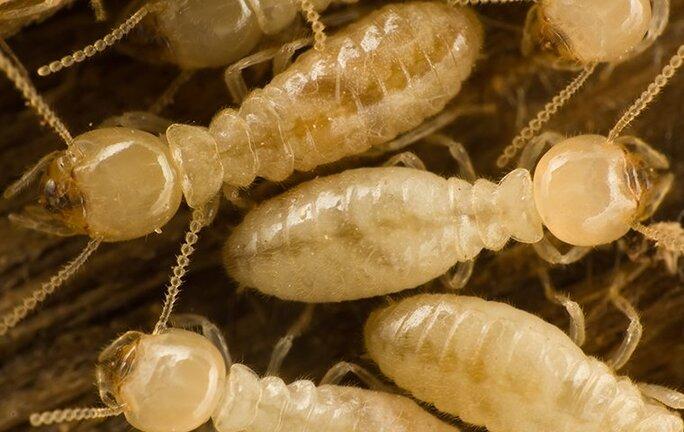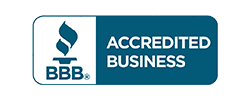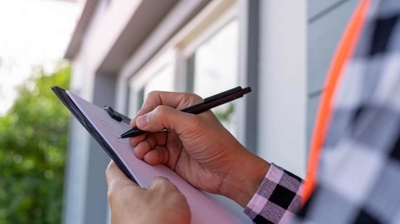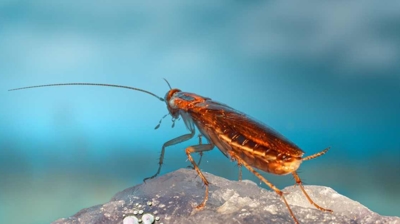
Termite Identification & Prevention
What are termites?
The termite is a species of wood-destroying insect that lives throughout the United States, including all throughout Hawaii. Termites are social, living, and working together in large colonies divided into different groups, or castes. The soft-bodied workers make up most of the colony and are responsible for gathering food by invading wood and wooden structures. Soldiers protect the colony from danger with their strong jaws. The reproductive members (males and fertile females) are the only members with wings; large, black reproductive termites are often seen by people, emerging or swarming from mature colonies to find mates and create new colonies.
Termites feed on the cellulose found in wood and other plant matter. They are one of the few organisms able to feed on cellulose. Protozoa living in their stomachs convert the cellulose into usable sugar. The most common species of termites living in Honolulu are subterranean termites, Formosan termites, and West Indian drywood termites.

Why do I have a termite problem?
Termites thrive in Hawaii’s year-round tropical climate. Termites nesting on or near a property often become a problem for property owners once they find their way inside a home or other building while foraging for food.
- They enter your home in many different ways, including:
- Through cracks and crevices in the foundation.
- Through wooden structures that are making direct contact with the soil.
- Through the roof (Formosan termites).
- Through pieces of wood or wood furniture already infested with termites (drywood termites).
Where will I find termites?
Where termites prefer to live depends on their species. Subterranean termites and Formosan termites do not nest inside the wood they are feeding on. They travel back and forth from their nest to their food source each day. Drywood termites, on the other hand, do live within the wood they are feeding on.
- Subterranean termites create nests under the ground. Inside homes, these termites feed on the interior of structural wood located behind walls and below floors, usually near pipes and sinks. They prefer wood damaged by water. If necessary, subterranean termites create mud tubes that they use to travel through at ground level or to move across walls or floors. Mud tubes help them maintain moisture and stay hidden from predators.
- Formosan termites will nest below or above the ground. Formosan termites create carton nests which allow them to nest aerially and still maintain their moisture needs. These termites often place their carton nests inside of walls voids or on top of flat rooftops. Formosan termites also prefer to feed on structural wood that has been damaged by water.
- West Indian drywood termites feed on sound wood not damaged by water. They live inside of things like building timbers, structural wood, antique wooden furniture, banisters, and wood trim.
How do I get rid of termites?
If you have discovered termites in your yard or home, the best way to get rid of them and prevent them from returning, is to reach out to Able Pest Management, LLC. Our team will come to your aid and develop a pest control program that is customized to meet the unique needs of your home and family.
Our highly trained and experienced professionals are passionate about eliminating termites through our proven treatment methods. If you are looking for exceptional pest control for your Honolulu home or business, reach out to Able Pest Management today!

How can I prevent termites in the future?
Keep termites out of your Honolulu home and away from your family with the help of Able Pest Management and the following termite prevention tips:
- Use dehumidifiers and ventilate crawlspaces to reduce moisture levels in your home.
- Seal up cracks and crevices in your home’s foundation.
- Repair any loose or missing roof shingles or other roof damage.
- Inspect antique furniture, barn wood, and other wooden items for signs of termites before bringing them into your home.
- Maintain a barrier between any soil or mulch and your home’s foundation.
- Replace mulch with a non-organic gardening material.
- Remove fallen trees, tree stumps, and other excess debris from your yard.
- Prevent structural wood in your home from becoming water damaged by keeping gutters clear so water will drain from them, placing weather stripping around windows and doors, and fixing leaky pipes and fixtures.


Why Choose Able Pest Management?
-
Safe & Effective Treatments
-
Trained & Certified Techs
-
Customer Care Focused
-
Over 20 Years of Experience
What Our Customers Are Saying
-
“The team at Able Pest Management is knowledgeable, professional, and thorough. They effectively took care of our ant problems, inspecting and spraying both inside and outside. We're glad to have our contract with them!”- Lisa M.
-
- Jenn M.
Since I switched to Able Pest Control, my home has been mostly bug free. That was not the case with my former company. The workers are very polite and accommodating. Service is very good. Joshua was excellent
-
- Linda T.
Arnel and Forest took such good care of us! They were on time, friendly, polite, knowledgeable and efficient in their work. I would highly recommend Able Pest Control to all my friends. -
- Sherry S.
If you are looking for a way to rid your home of unwanted pests, LOOK NO FURTHER. When I first moved into our home, it was full of roaches and centipedes. I tried all the over-the-counter customary remedies, but to no avail. That's when someone suggested that I contact Able Pest Management. From my initial contact to the first visit with the technician, the staff at Able Pest has been amazing!! My technician took time to explain to me the plan of action, then followed up with me each month to make certain that my unwanted insects remained in their habitats! I am so thankful to say that I no longer have a problem with insects invading my space! I absolutely love that I can turn on the lights in any room in my house and no longer see little bugs scattering. Thank you Able Pest for giving me back my peace of mind!! The service rates are so reasonable, the scheduling is flexible, and the online payment portal is fast and convenient! This is truly one of the best investments I have made!!
-
- Jamie L.
We really appreciate Arnel’s friendly and punctual service. He’s great at communicating his arrival time and is a good listener when we have pest issues. We recommend Able Pest for all your pest control needs!
-
- Jenna S.
You cannot go wrong with this company- they are communicative, professional, and friendly. Plus we haven't had a mouse problem in a while- they really keep on top of it. Donovan is the best- he always makes sure we haven't had any issues and i feel very comfortable with him visiting the house.
-
- Cynthia Q.
Joshua constantly kept me informed as to the time he would be here. I liked that. He was professional, friendly, and expedient. He also gave some pointers and answered my questions. I am happy with your services.
-
“We've been using Able Pest Management for years without any issues! The team is always friendly, listens to our needs, and provides the best customer service. Able Pest Management has been consistently awesome. Great team!”- Chassis S.











